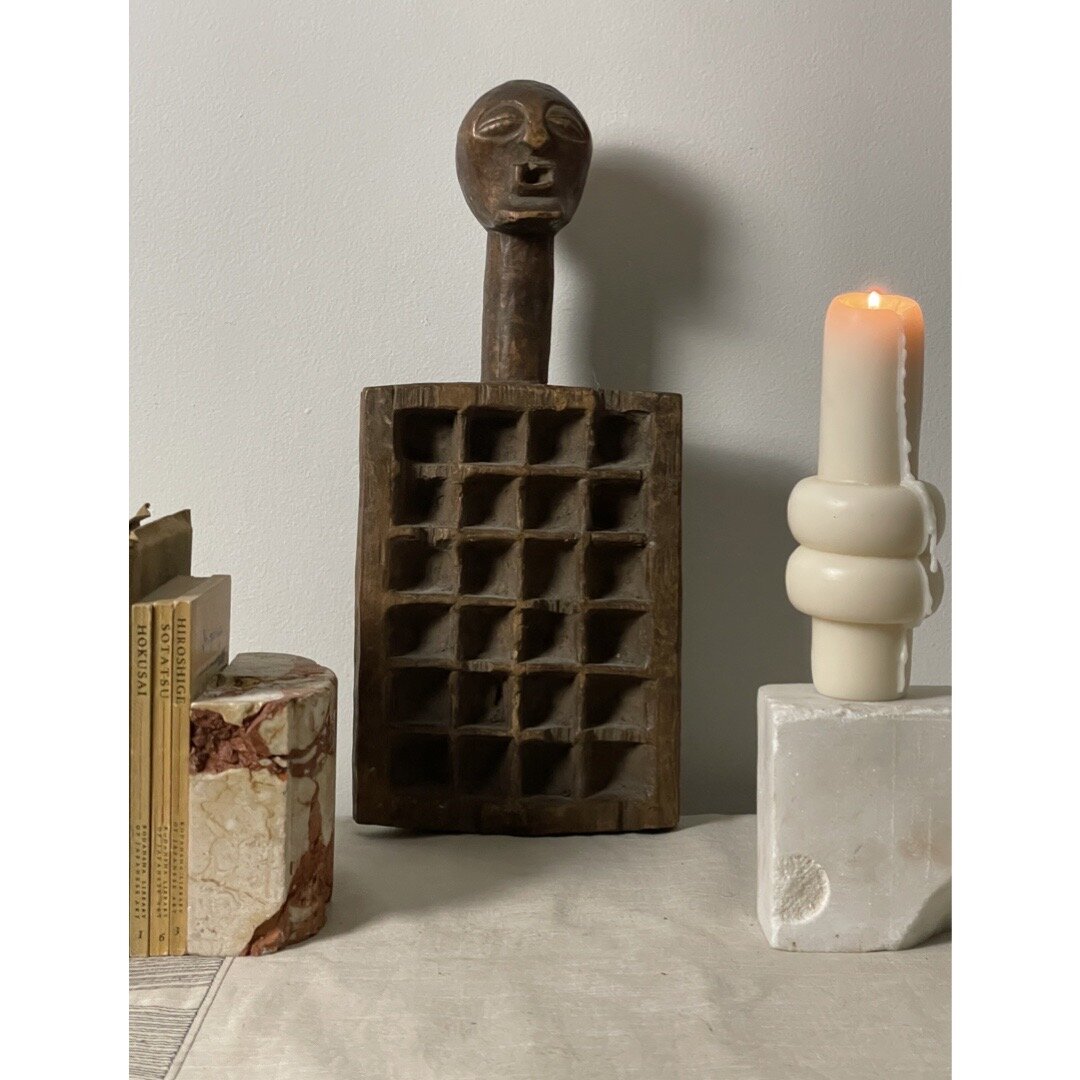 Image 1 of 13
Image 1 of 13

 Image 2 of 13
Image 2 of 13

 Image 3 of 13
Image 3 of 13

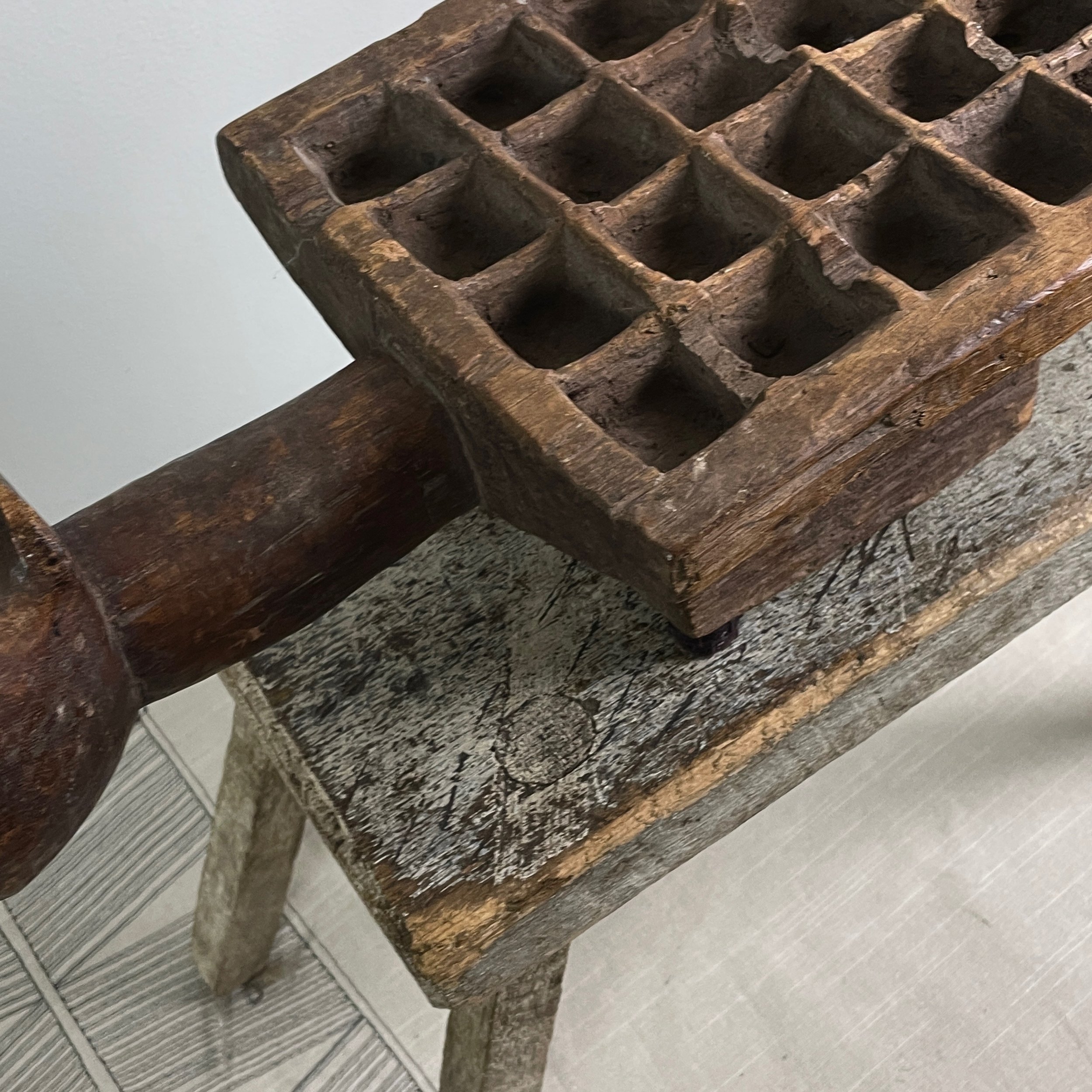 Image 4 of 13
Image 4 of 13

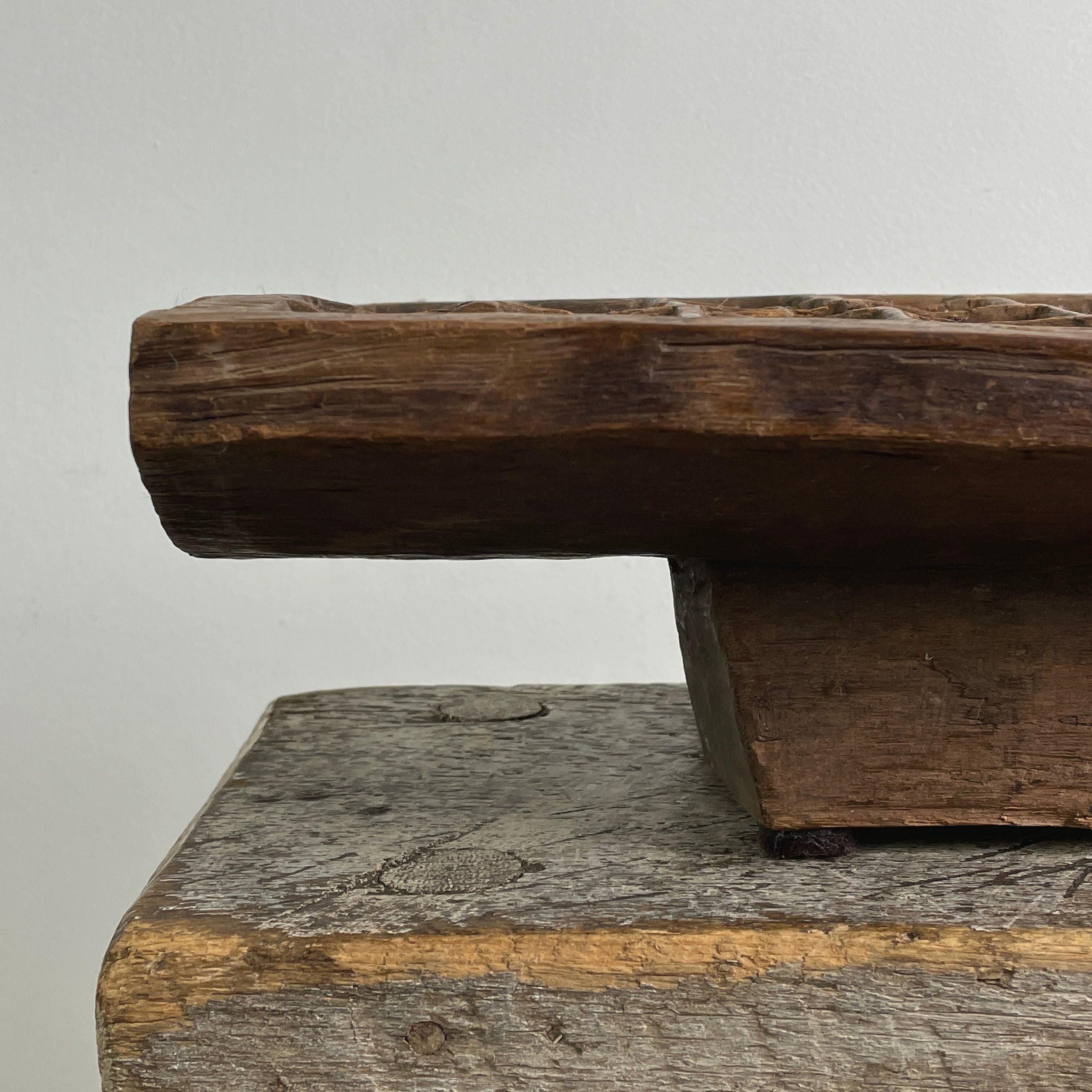 Image 5 of 13
Image 5 of 13

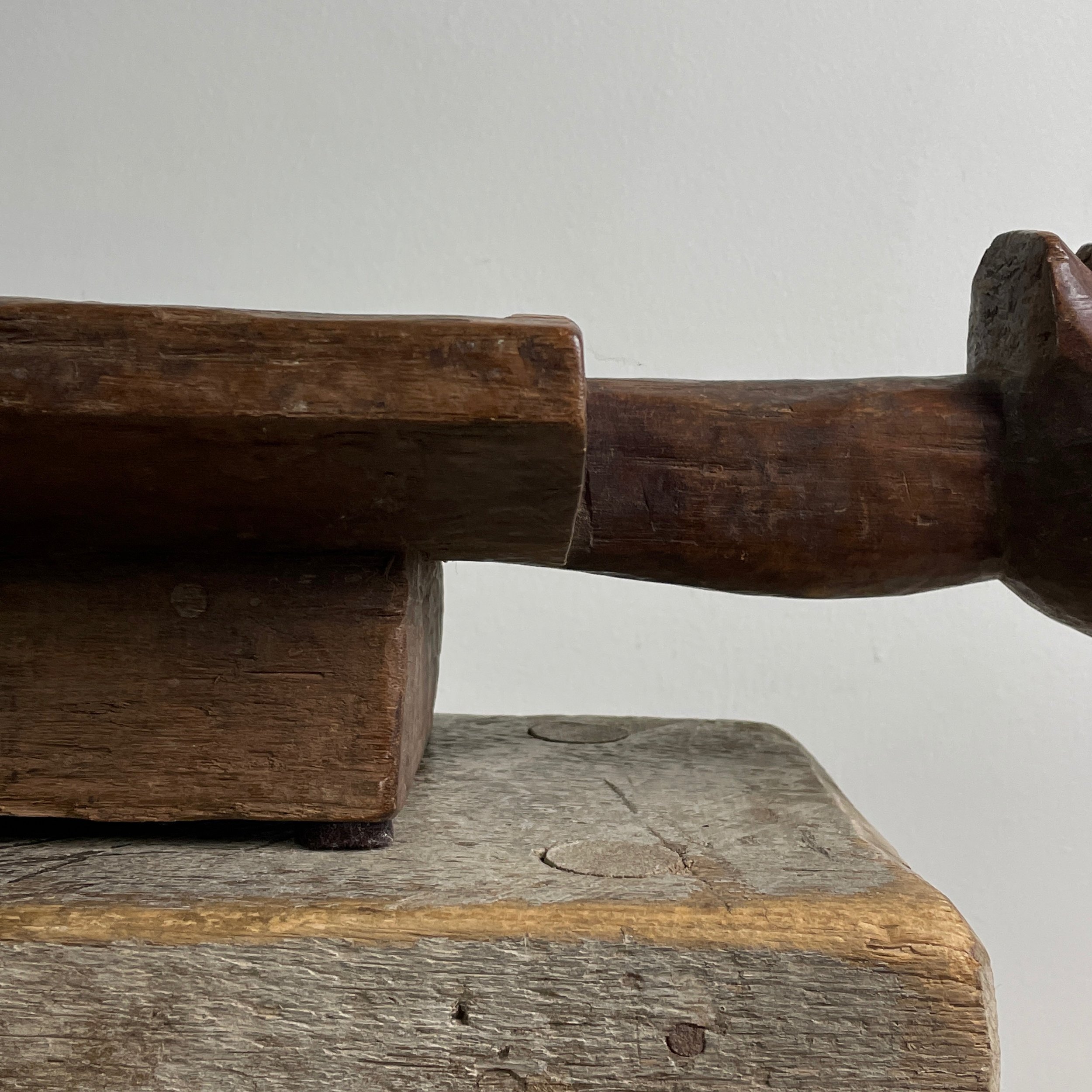 Image 6 of 13
Image 6 of 13

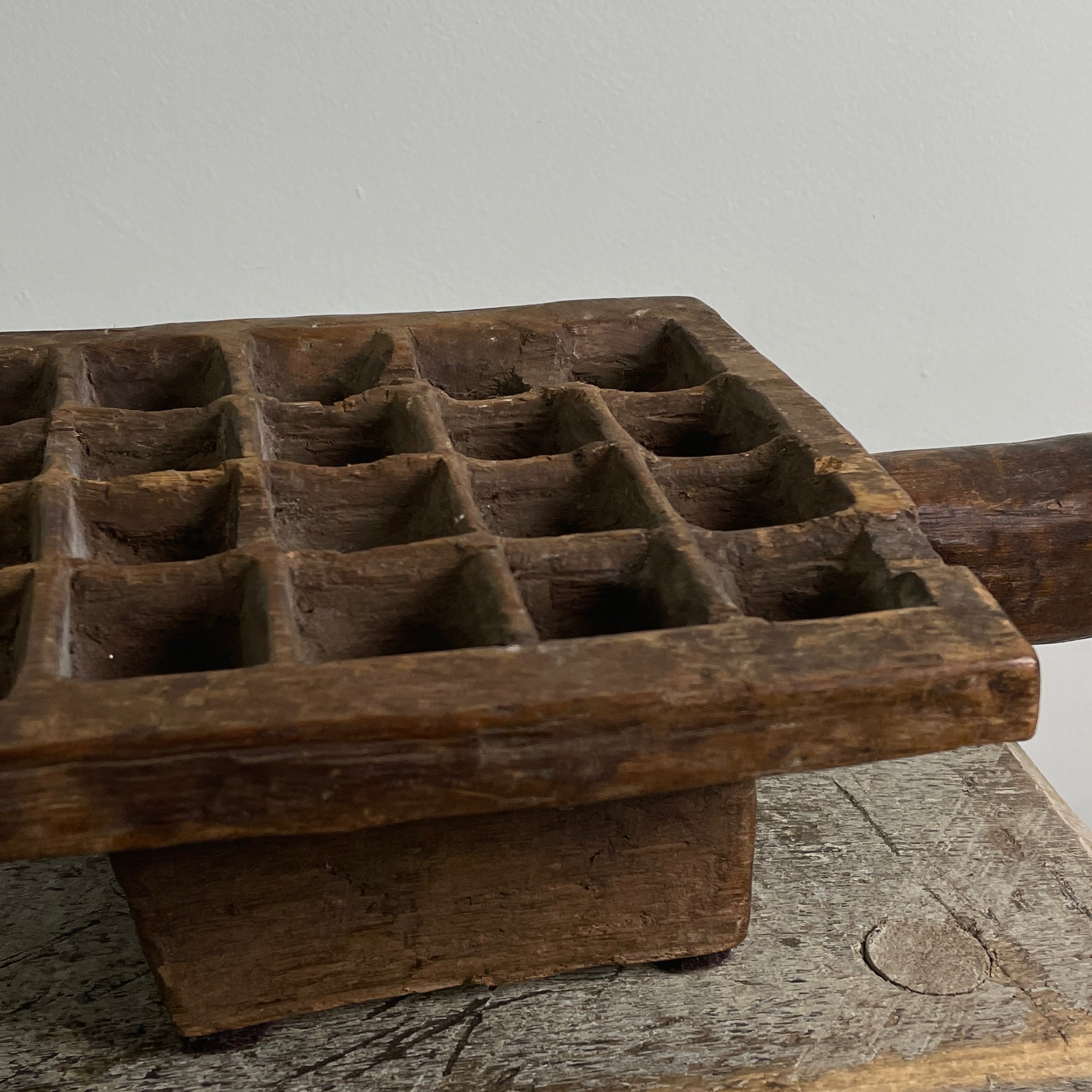 Image 7 of 13
Image 7 of 13

 Image 8 of 13
Image 8 of 13

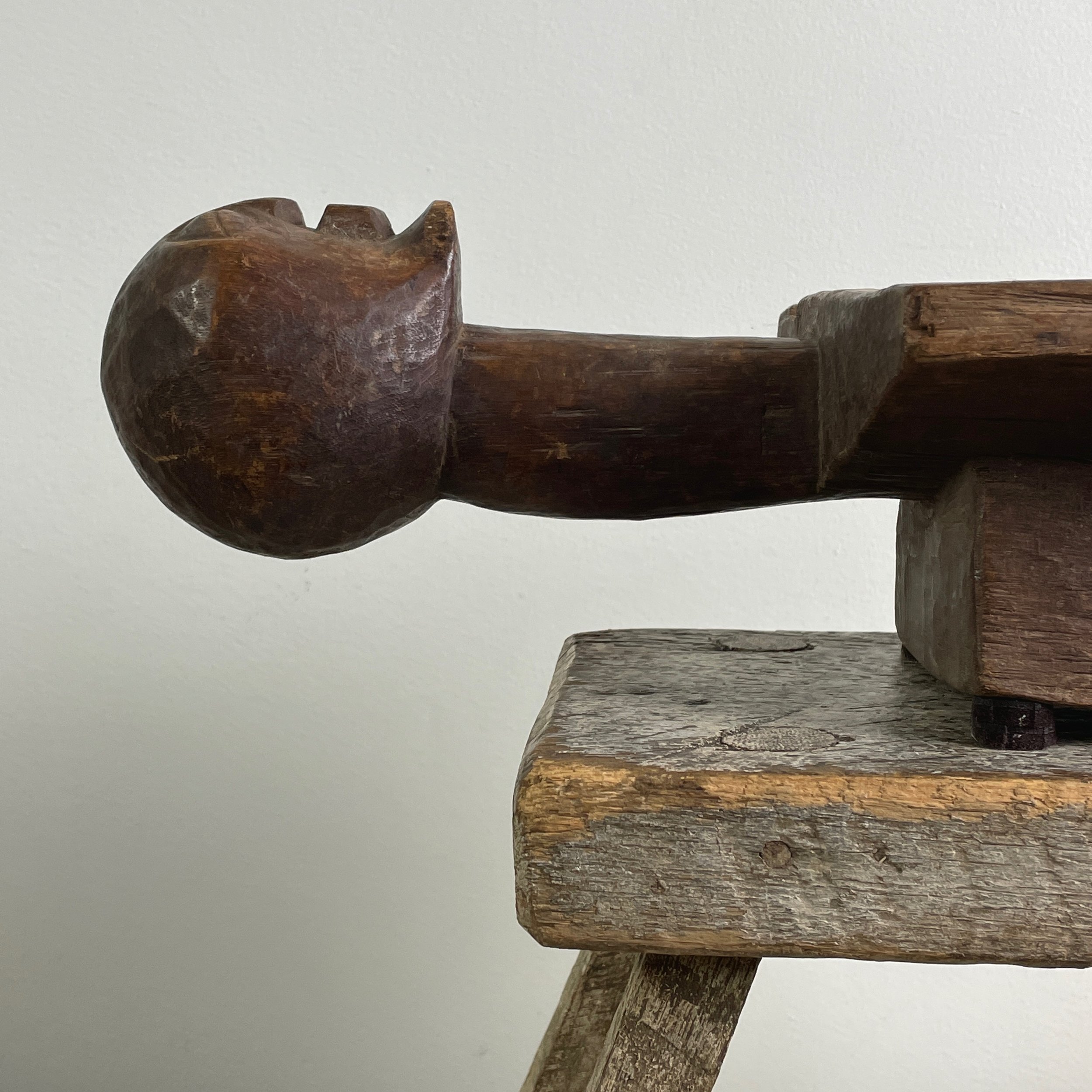 Image 9 of 13
Image 9 of 13

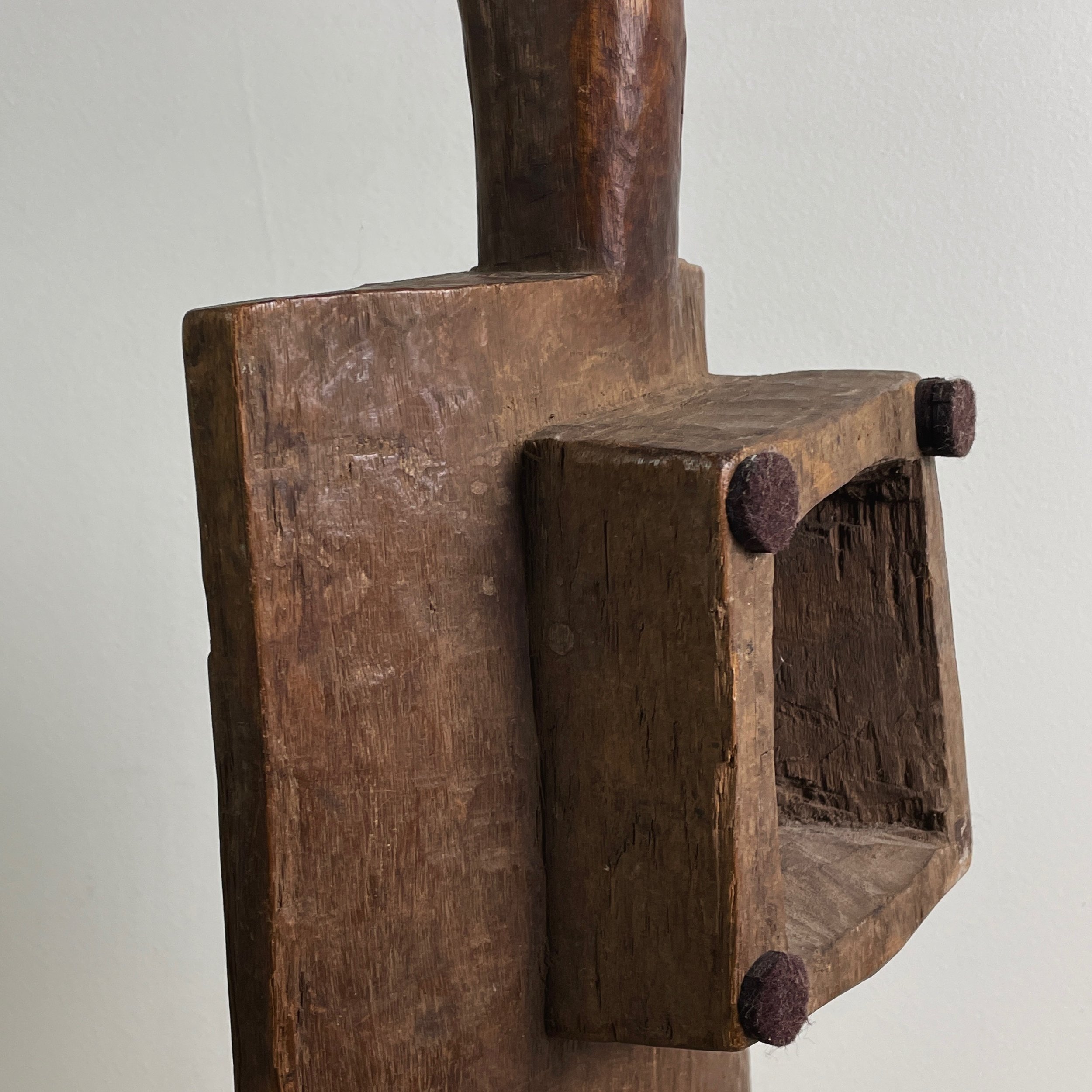 Image 10 of 13
Image 10 of 13

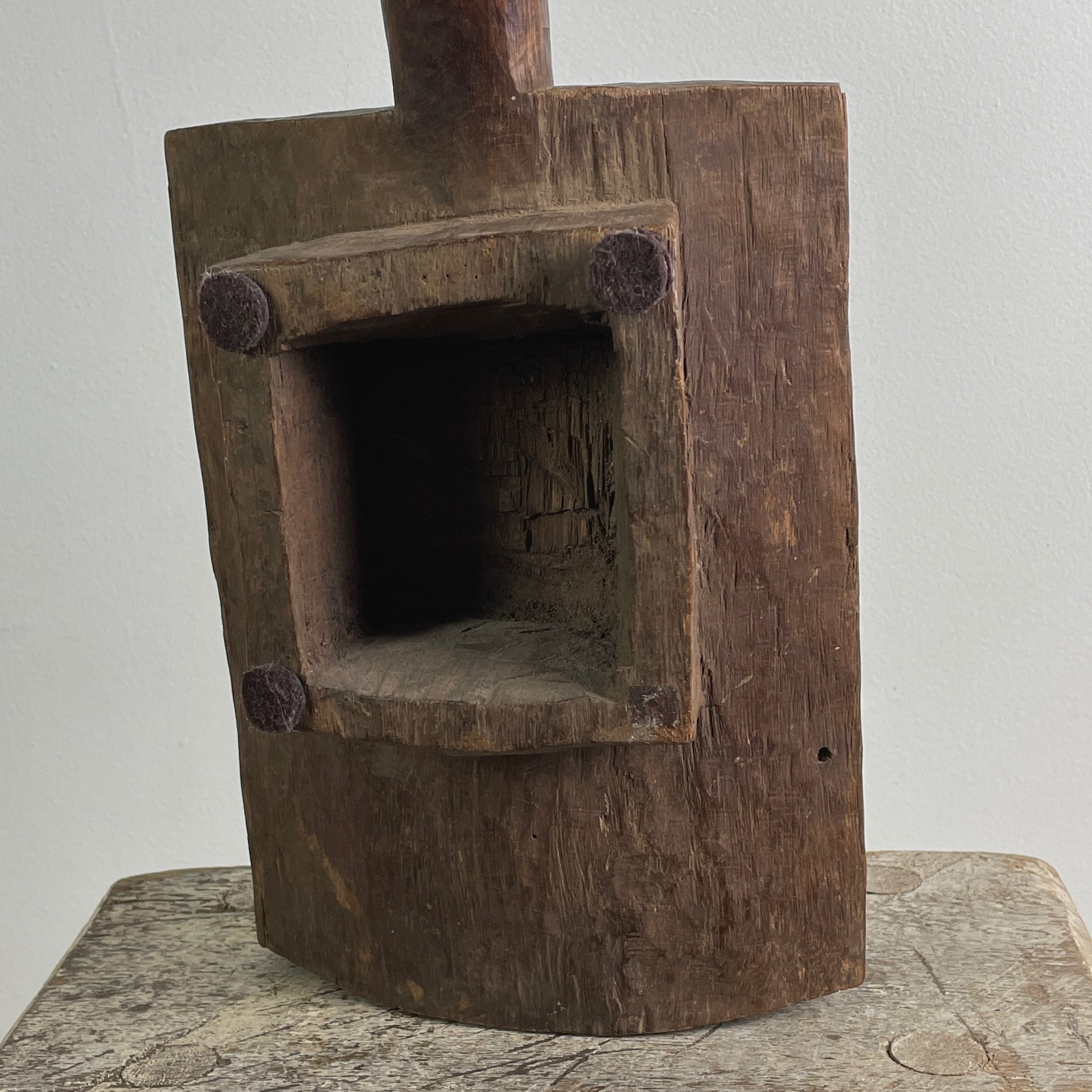 Image 11 of 13
Image 11 of 13

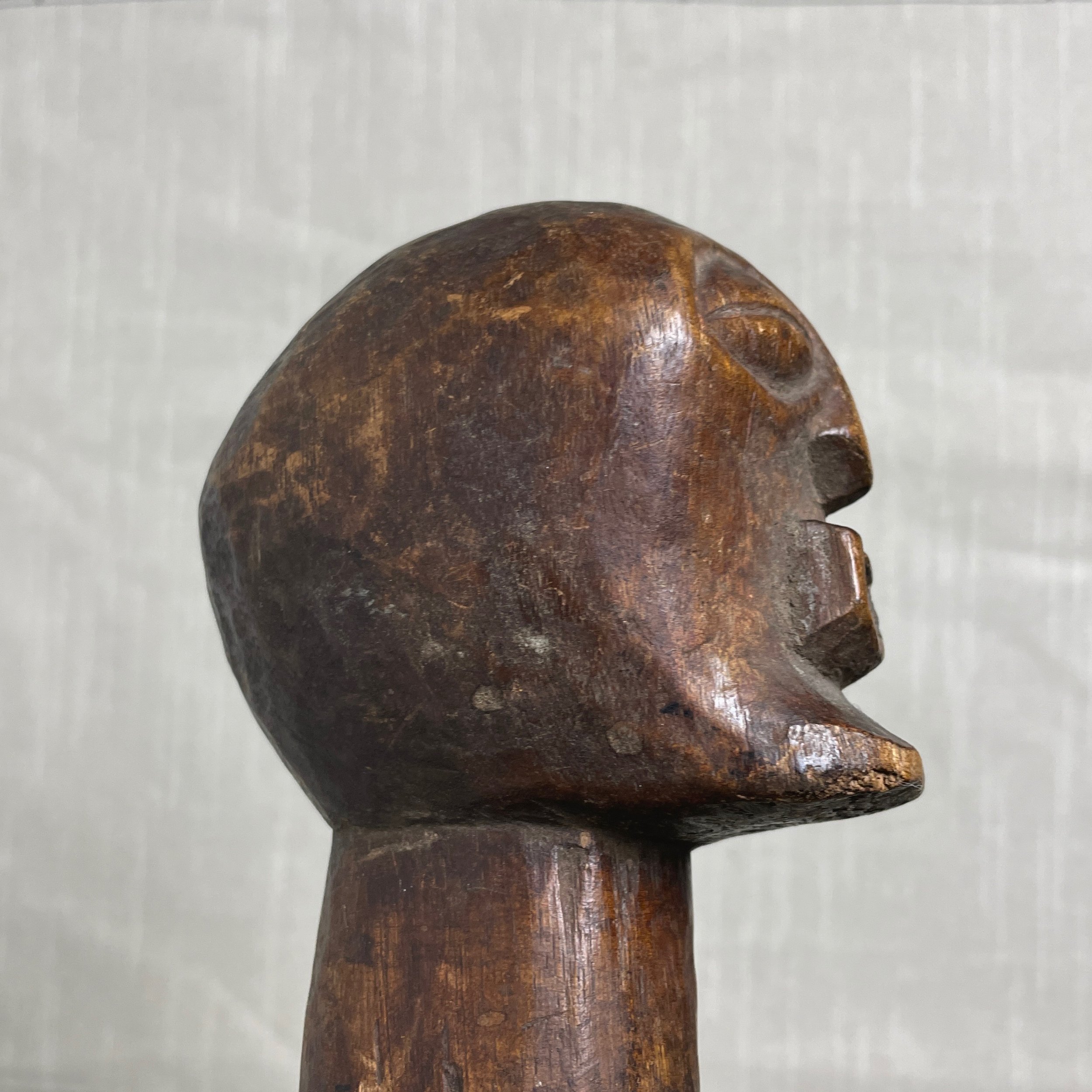 Image 12 of 13
Image 12 of 13

 Image 13 of 13
Image 13 of 13














Antique Hand Carved African Songye Game Board
This board game is a variation of Mancala. It is one of oldest games in the world. There are variations on the rules of the game and on the layout of the board. Some boards have two rows, three rows or 4 rows as in this board. The game involves count and capture.
This game board has 24 consoles topped by a watchful face. It wears the expression of surprise or perhaps caution to the winning or losing game partners. This game board has been used quite a bit. Purchased in the Democratic Republic of Congo.
in used condition with scratches and scuffs on the body of the board. Please refer to pictures for details.
Size: 17" x 8" x 5"
The Songye traditionally relied mostly on farming and hunting for subsistence. Because the rivers were associated with the spirits of deceased chiefs who were often buried in them, fishing was not practiced except in times of great need. The artistic wares of the Songye, including pottery made by women and weaving and metalworking done by men, were traded extensively with their neighbors.The Songye created a sculptural style of intense dynamism and vitality. The works of Songye craftsmen are often used within the secret societies during various ceremonies. They produced a large number of figures belonging to the fetishist, who manipulates them during the rituals of the full moon. Songye fetish figures vary in size from 4” to 60”. They are usually male and stand on a base. Strips of metal, nails or other paraphernalia are sometimes applied over the face, which counteract evil spirits and aggressors and channel lightings against them. The top of the head and the abdomen are usually hollowed to allow insertion of fetish material, called boanga. These figures adopt a hieratic posture, the hands placed on a pointed abdomen; on top of the head they have a horn or feathers reinforcing a disquieting appearance. The fetishist would make the boanga with magic ingredients, which he crumbled and mixed, thus obtaining a paste that was kept in an antelope horn hung from the roof of the house. The magic ingredients consist of a wide variety of animal, vegetal, mineral and human substances that activate and bring into play benevolent ancestral spirits. The face is often covered with nails, a reminder of smallpox. The style of Songye fetishes, carved from wood or horn and decorated with shells, is not as realistic as the classic Luba style, and their integration of non-naturalistic, more geometric forms is impressive. The figures are used to ensure their success, fertility, and wealth and to protect people against hostile forces as lightning, as well as against diseases such as smallpox, very common in that region. While smaller figures of this type were kept and consulted by individuals, larger ones were responsible for ensuring the welfare of an entire community.
This board game is a variation of Mancala. It is one of oldest games in the world. There are variations on the rules of the game and on the layout of the board. Some boards have two rows, three rows or 4 rows as in this board. The game involves count and capture.
This game board has 24 consoles topped by a watchful face. It wears the expression of surprise or perhaps caution to the winning or losing game partners. This game board has been used quite a bit. Purchased in the Democratic Republic of Congo.
in used condition with scratches and scuffs on the body of the board. Please refer to pictures for details.
Size: 17" x 8" x 5"
The Songye traditionally relied mostly on farming and hunting for subsistence. Because the rivers were associated with the spirits of deceased chiefs who were often buried in them, fishing was not practiced except in times of great need. The artistic wares of the Songye, including pottery made by women and weaving and metalworking done by men, were traded extensively with their neighbors.The Songye created a sculptural style of intense dynamism and vitality. The works of Songye craftsmen are often used within the secret societies during various ceremonies. They produced a large number of figures belonging to the fetishist, who manipulates them during the rituals of the full moon. Songye fetish figures vary in size from 4” to 60”. They are usually male and stand on a base. Strips of metal, nails or other paraphernalia are sometimes applied over the face, which counteract evil spirits and aggressors and channel lightings against them. The top of the head and the abdomen are usually hollowed to allow insertion of fetish material, called boanga. These figures adopt a hieratic posture, the hands placed on a pointed abdomen; on top of the head they have a horn or feathers reinforcing a disquieting appearance. The fetishist would make the boanga with magic ingredients, which he crumbled and mixed, thus obtaining a paste that was kept in an antelope horn hung from the roof of the house. The magic ingredients consist of a wide variety of animal, vegetal, mineral and human substances that activate and bring into play benevolent ancestral spirits. The face is often covered with nails, a reminder of smallpox. The style of Songye fetishes, carved from wood or horn and decorated with shells, is not as realistic as the classic Luba style, and their integration of non-naturalistic, more geometric forms is impressive. The figures are used to ensure their success, fertility, and wealth and to protect people against hostile forces as lightning, as well as against diseases such as smallpox, very common in that region. While smaller figures of this type were kept and consulted by individuals, larger ones were responsible for ensuring the welfare of an entire community.
